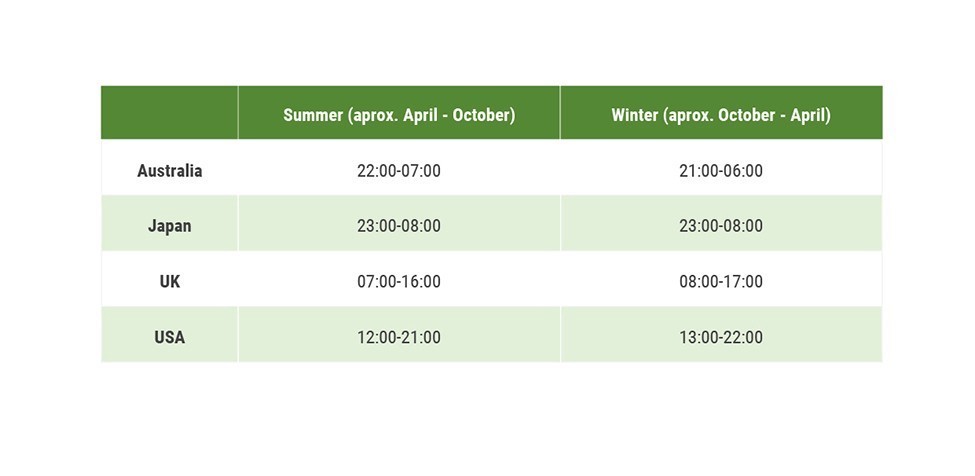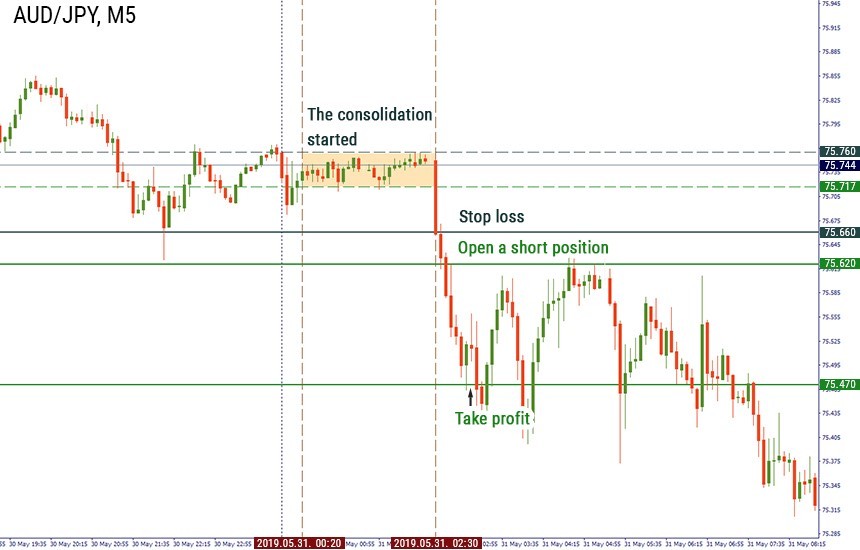
Bill Williams is the creator of some of the most popular market indicators: Awesome Oscillator, Fractals, Alligator, and Gator.

Don’t waste your time – keep track of how NFP affects the US dollar!
Data Collection Notice
We maintain a record of your data to run this website. By clicking the button, you agree to our Privacy Policy.

Beginner Forex Book
Your ultimate guide through the world of trading.
Check Your Inbox!
In our email, you will find the Forex 101 book. Just tap the button to get it!
Risk warning: ᏟᖴᎠs are complex instruments and come with a high risk of losing money rapidly due to leverage.
71.43% of retail investor accounts lose money when trading ᏟᖴᎠs with this provider.
You should consider whether you understand how ᏟᖴᎠs work and whether you can afford to take the high risk of losing your money.
2019-11-11 • Updated
Information is not investment advice
It is quite obvious that your trading actions must be adapted to the session when you trade. Today, we will discover the secrets of trading during the Asian trading hours. We recommend you to implement it around the start of the Tokyo trading session (00:00 GMT time). Let’s consider the strategy for making money while Europe and America sleep.

As the volatility during the Asian trading hours is low, we recommend you to choose the AUD/JPY pair. This is one of the most volatile pairs during the Asian trading session. However, you may choose other currency pairs, such as AUD/NZD or NZD/JPY. Before 00:00 GMT, the volatility in the market is usually pretty low. It happens because only the American traders are active between 12:00 GMT and 21:00 GMT. After 21:00 GMT, the Australian traders enter the market, but the volatility is still low.
You need to wait for a consolidation period between 22:00 GMT and 00:00 GMT on the M5 chart. If the price is trending, then you should not consider this strategy.
The breakouts in the direction of a trend are better, as they are more likely to last longer. The breakout might not happen until 00:00 GMT and there is nothing strange about it. The fact is that the break of a range during the Asian session will definitely happen. However, you may face with a fakeout.
During the Asian session, the volume is very low, that is why it is not recommended to open a position as soon as a candlestick breaks the range. We wait for the next candlestick to confirm the break and open the position at the opening price of the candlestick.
Let’s consider the example. We will use Metatrader time (the time of our trading platform)*.
On May 31 we could see the consolidation since 00:20 MT (21:20 GMT) on the M5 chart of AUD/JPY. A break to the downside occurred at 02:30. We waited for the next candlestick to close lower than the previous one and open a short position below the previous low at 75.62. We place our stop loss at 75.66 (higher than the resistance) and our take profit is placed at 75.47 (higher than the support level).

Important tip. You may not want to cut all of you profit too early. In this case, you can take your profit progressively, slowly trailing your stop order in the case of a reversal.
The strategy described above works only when a range occurs before the Tokio trading hours. These type of consolidations is quite common and may bring you a guaranteed profit.
* MT time equals GMT+3 timezone during summer. When Europe adjusts its time one hour backward for the daylight saving shift during autumn, MT time changes too. Thus, it becomes GMT+2 during winter.

Bill Williams is the creator of some of the most popular market indicators: Awesome Oscillator, Fractals, Alligator, and Gator.

Trend strategies are good - they may give significantly good results in any time frame and with any assets. The main idea of the ADX Trend-Based strategy is to try to catch the beginning of the trend.

Counter-trend strategies are always the most dangerous but also the most profitable. We are pleased to present an excellent counter-trend strategy for working in any market and with any assets.
Your request is accepted.
We will call you at the time interval that you chose
Next callback request for this phone number will be available in 00:30:00
If you have an urgent issue please contact us via
Live chat
Internal error. Please try again later